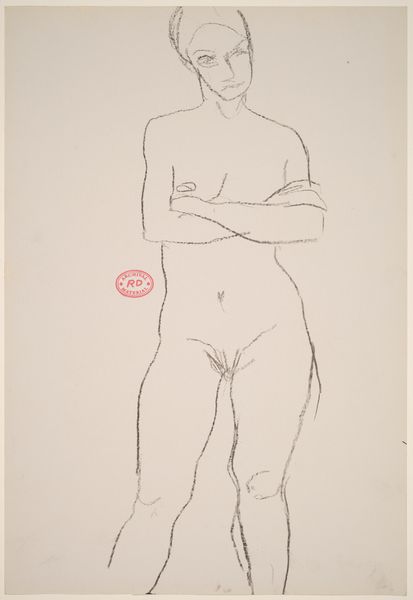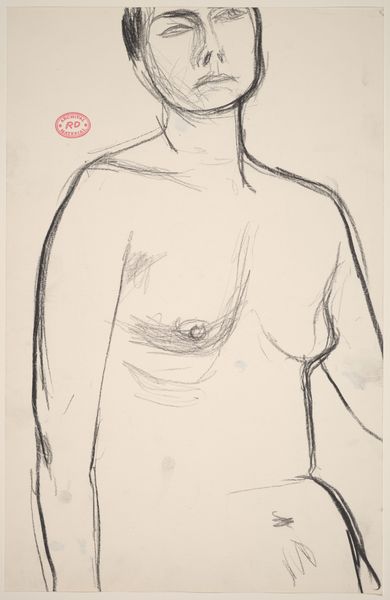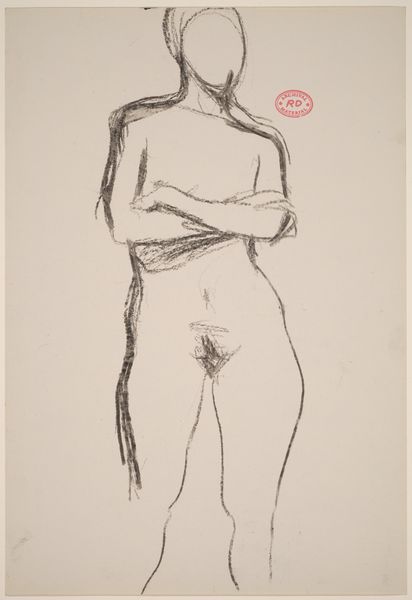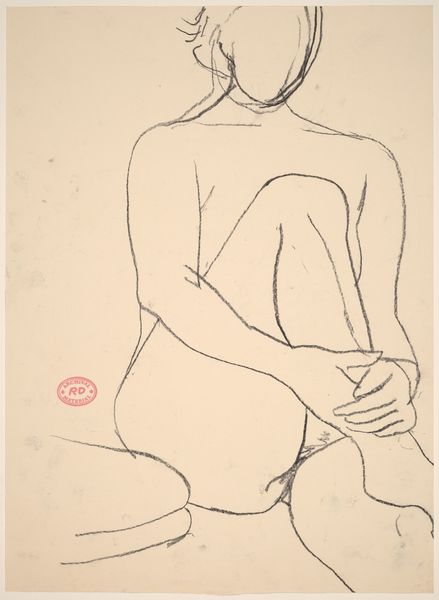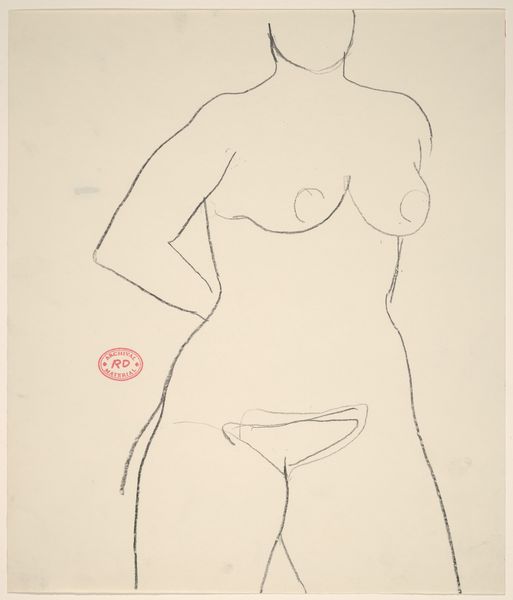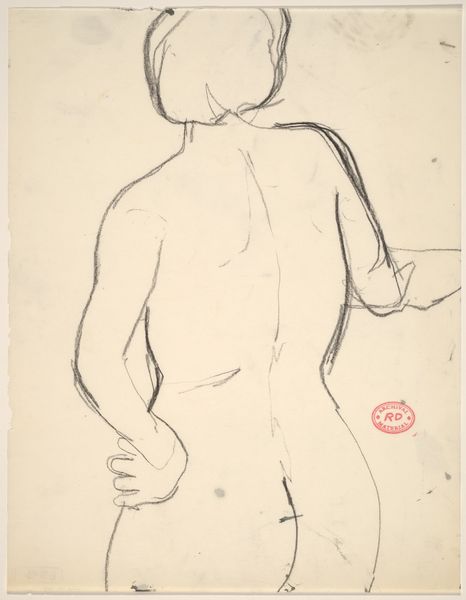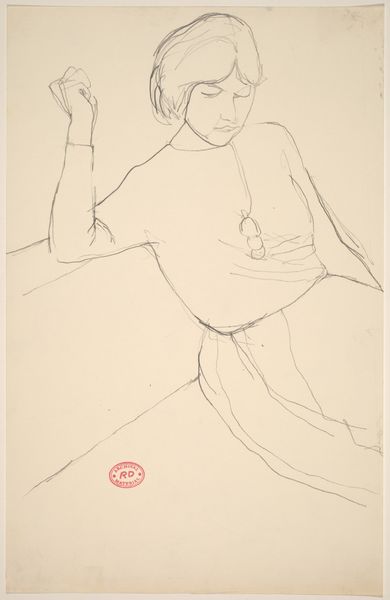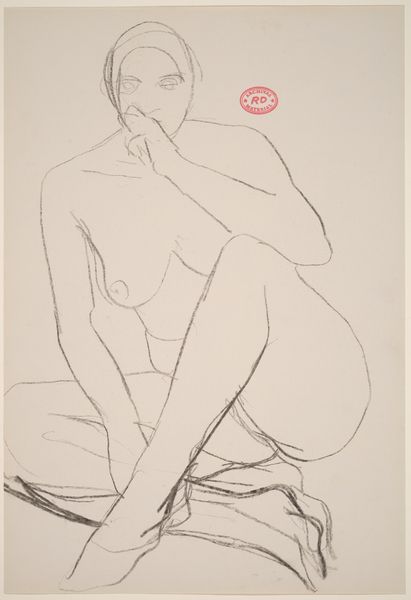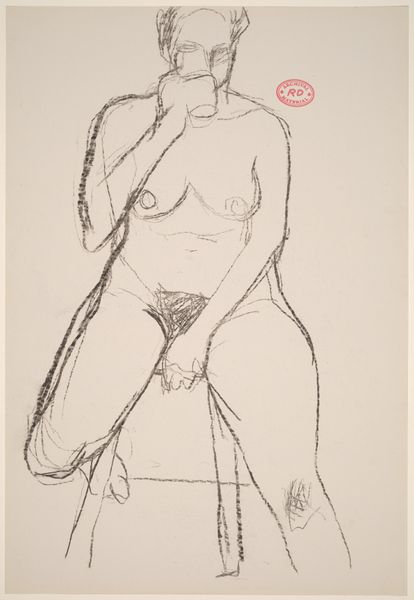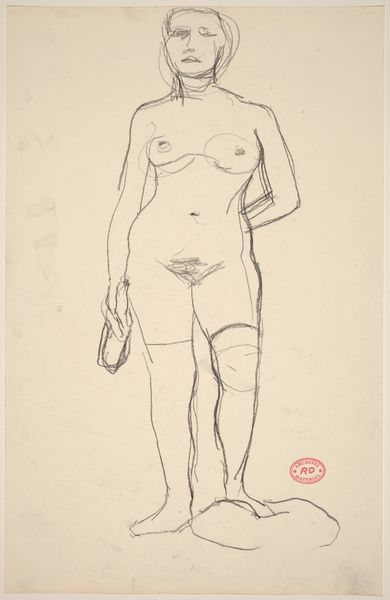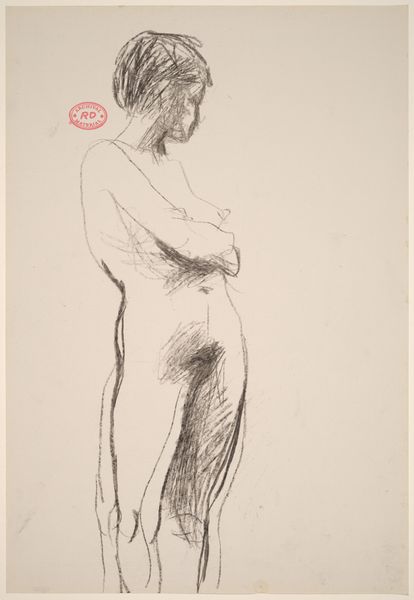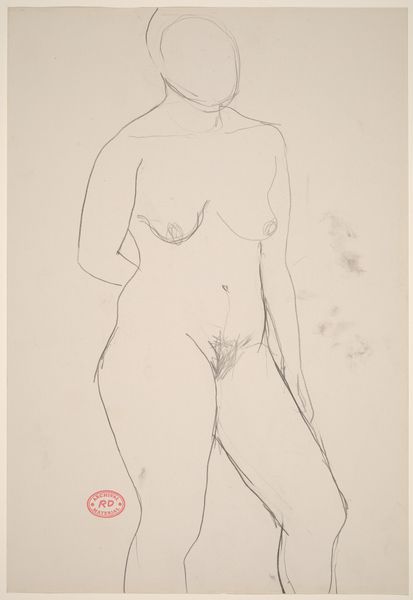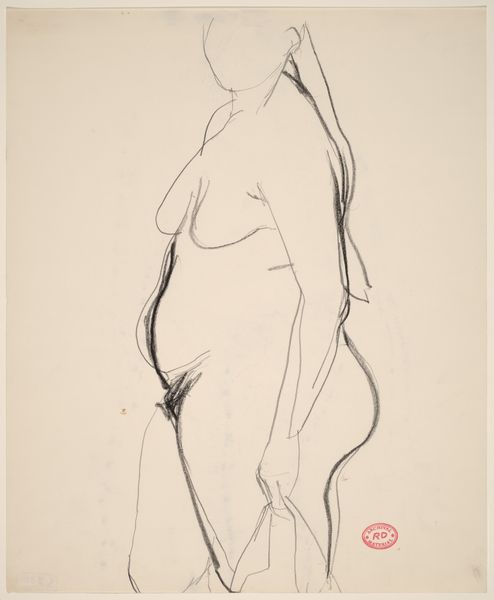![Untitled [side view of standing female nude with arms crossed] by Richard Diebenkorn](/_next/image?url=https%3A%2F%2Fd2w8kbdekdi1gv.cloudfront.net%2FeyJidWNrZXQiOiAiYXJ0ZXJhLWltYWdlcy1idWNrZXQiLCAia2V5IjogImFydHdvcmtzL2JkNTBhMmZjLTRiZmUtNDQzZC04YWQzLTBlNzIyM2NiZjhmZC9iZDUwYTJmYy00YmZlLTQ0M2QtOGFkMy0wZTcyMjNjYmY4ZmRfZnVsbC5qcGciLCAiZWRpdHMiOiB7InJlc2l6ZSI6IHsid2lkdGgiOiAxOTIwLCAiaGVpZ2h0IjogMTkyMCwgImZpdCI6ICJpbnNpZGUifX19&w=3840&q=75)
Untitled [side view of standing female nude with arms crossed] 1955 - 1967
0:00
0:00
drawing
#
pencil drawn
#
drawing
#
amateur sketch
#
light pencil work
#
ink drawing
#
pencil sketch
#
bay-area-figurative-movement
#
pencil drawing
#
ink drawing experimentation
#
pen-ink sketch
#
arch
#
portrait drawing
#
pencil work
Dimensions: overall: 40.6 x 27.9 cm (16 x 11 in.)
Copyright: National Gallery of Art: CC0 1.0
Curator: Looking at this piece, I immediately sense vulnerability. There's a delicacy to the lines that conveys a fragility. Editor: This is an untitled drawing by Richard Diebenkorn, created sometime between 1955 and 1967. The medium appears to be pencil on paper. It depicts a standing female nude, seen from the side, with her arms crossed. Curator: The crossed arms—it's such a loaded gesture. Often, it suggests defensiveness or self-protection, even in classical art, right? Here, it almost accentuates the subject’s nudity, calling attention to her vulnerability instead of concealing it. Editor: Precisely. During this period, Diebenkorn was moving between abstraction and figuration. He returned to the figure repeatedly, partly in response to the changing cultural landscape, with its growing Pop Art movement and challenges to Abstract Expressionism, so figuration, historically, could have suggested either an avant garde or even a reactionary political stance, which could explain the ambiguity here. Curator: Interesting! I’m captivated by the minimal use of line. How just a few strokes can suggest form and emotion so effectively, calling back to memory the power of linear expression in past nudes and figurative art from a variety of different eras and cultures. And the slight awkwardness – it avoids the traditional idealization of the nude. Editor: The rough lines give the drawing a sense of immediacy, like a fleeting moment captured. There’s no pretense here, it really emphasizes that in-between state of existing when stripped away, both figuratively and literally. Curator: And it reflects the shifting tides in art at that time, especially concerning ideas about feminine form. This isn't about flawless beauty. Editor: It certainly raises questions about the portrayal of the female figure, its potential iconographic meanings, and its socio-cultural implications. I see here both tradition and experimentation that feel very present. Curator: Agreed. It’s a reminder of how symbols shift in meaning depending on when and where you encounter them.
Comments
No comments
Be the first to comment and join the conversation on the ultimate creative platform.
